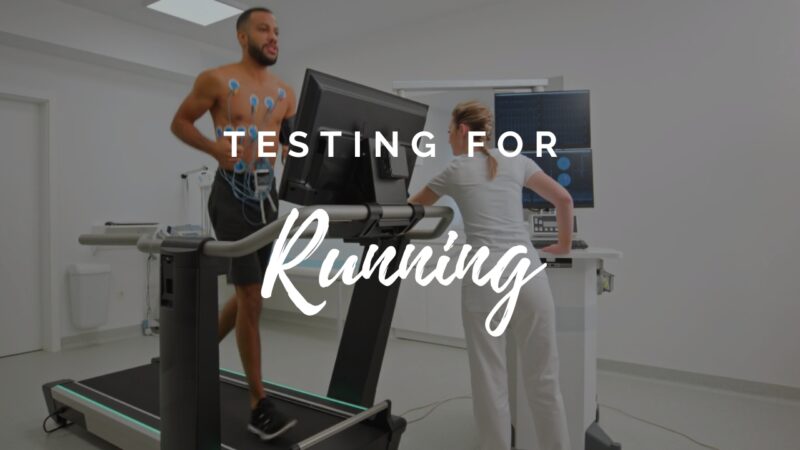When it comes to endurance training, understanding your personal fitness threshold is invaluable. This is the point at which your body switches from aerobic to anaerobic metabolism, offering vital insights into your training capabilities and limits.
This blog post will delve into the basics of threshold testing for swimming, cycling, and running, giving you the tools to monitor and elevate your performance.
A Brief Overview

Thresholds are essentially physiological tipping points. When performing any endurance activity, your body primarily utilizes oxygen (aerobic metabolism) to create energy. However, as the intensity of the activity increases, your body will start to rely more on energy reserves that don’t require oxygen (anaerobic metabolism).
This transition point, where your body cannot keep up with the oxygen demand and starts to rely more on anaerobic metabolism, is referred to as the lactate or anaerobic threshold. If you train just below this point, you can increase your endurance and improve your overall performance. But exceeding it often leads to fatigue and diminished results.
Why Threshold Testing is Important
This testing enables you to identify the upper limit of your aerobic capacity. By pinpointing your anaerobic threshold, you can precisely define your training zones for optimal results. Tailoring your workout according to these zones allows you to focus on specific aspects of your fitness and avoid overtraining.
Apart from training efficiency, threshold testing also helps in tracking fitness progression. Regular testing allows you to see if your threshold is increasing, which would signify an improvement in your aerobic fitness. It also helps you better understand your body’s response to different intensities of exercise, allowing for more personalized and effective training plans.
Testing for Swimming
While many people believe that threshold testing is only for running and cycling, it’s just as critical for swimmers. In the pool, your anaerobic threshold represents the fastest pace you can maintain without fatiguing. The most common method of testing for swimming is the Critical Swim Speed (CSS) test.
The CSS test involves two timed swims – a 400m and a 200m – with ample recovery in between. From the times achieved, your CSS pace is calculated, representing the hypothetical speed that you could maintain comfortably for 1500m. Understanding your CSS helps you train more effectively, focusing your efforts on improving your pace without overtraining. It is crucial to note that, like any threshold, your CSS will change over time, necessitating periodic retesting.
Testing for Cycling
Cycling threshold testing typically involves a Functional Threshold Power (FTP) test. The FTP represents your maximum power output that can be sustained for an hour without fatiguing. In simpler terms, it’s the highest amount of work you can do for an hour without hitting the proverbial ‘wall.’
The standard FTP test requires a 20-minute all-out effort, from which your FTP is calculated as 95% of your average power output during this time. By understanding your FTP, you can tailor your cycling training to improve your endurance, speed, and overall performance. It’s important to keep in mind that your FTP isn’t static – it can and will change as you train and adapt. Regular retesting allows you to track these changes and adjust your training plan accordingly.
Testing for Running

For runners, threshold testing often revolves around determining the Lactate Threshold (LT). This is the running pace at which lactic acid starts to accumulate in the blood faster than it can be removed, leading to fatigue. The most common field test for LT involves running a ‘tempo run’ or a ‘time trial’ of around 30 minutes at a sustainable maximum effort.
After a warm-up, you’ll run as fast as you can sustain for the full 30 minutes. Your LT pace is typically around 85-90% of the average pace you maintained during this test. Regular testing can help you track changes in your LT pace and adjust your training plan for optimal performance. It is also worth noting that like swimming and cycling, the threshold in running is a dynamic value and should be retested periodically.
Implementing Thresholds in Training
It’s important to know how to incorporate them into your training regimen.
- Base Endurance Training: This phase should comprise the majority of your training volume. Here, you train below your threshold to build aerobic capacity and endurance.
- Threshold Training: In this phase, you train right at your threshold. These sessions help to increase your lactate threshold, allowing you to maintain higher intensities for longer durations.
- Anaerobic Training: Here, you train above your threshold. These high-intensity sessions improve your body’s ability to tolerate and clear lactic acid, enhancing your overall performance.
Retesting and Adjusting Thresholds

As you continue to train and improve, your thresholds will also evolve. Hence, retesting is crucial to ensure your training zones remain accurate. Generally, retesting every 6-12 weeks is advised, depending on your training load, but it should be personalized according to your progression.
It’s essential to adjust your training zones based on your new thresholds after each retest. This ensures you are always training at the appropriate intensity for your current fitness level, maximizing the efficacy of your workouts and reducing the risk of overtraining.
The Science Behind This Testing
Let’s delve a bit deeper into the science behind threshold testing. When we talk about aerobic metabolism, we’re referring to your body’s ability to convert oxygen and nutrients into energy. On the other hand, anaerobic metabolism involves creating energy without using oxygen, instead relying on stored glucose and glycogen.
When you exercise, your body prefers to utilize aerobic metabolism because it’s more efficient and sustainable. However, as you push closer to your maximum effort, your body needs quick energy and starts to rely more on anaerobic metabolism. The point at which this switch occurs is your anaerobic threshold.
Measurement

Threshold testing typically involves measuring some parameters that indicate the transition from aerobic to anaerobic metabolism. In the case of running and cycling, these tests often revolve around heart rate, pace, or power output.
For swimming, pace per 100 meters or yards is commonly used. During a threshold test, you perform a controlled maximal effort over a set distance or time. The parameters measured during this test help define your training zones, which are ranges of intensity that align with specific physiological responses. These zones guide your training to target and improve different aspects of your fitness.
Training Zones
Your training zones, derived from your threshold testing, are divided into different ranges, each targeting a specific physiological response.
- Recovery Zone: This zone targets active recovery and endurance development, generally at 50-60% of your threshold.
- Aerobic Zone: Here, you’re building aerobic capacity and endurance at 60-70% of your threshold.
- Tempo Zone: This zone targets improved aerobic efficiency at 70-80% of your threshold.
- Threshold Zone: This zone aims to increase your threshold power at 80-90% of your threshold.
- Anaerobic Zone: This is high-intensity training at 90-100% of your threshold, improving your ability to perform at maximum effort.
Incorporating This Testing into Your Training Regimen

With your training zones established, you can now structure your training plan. Remember, the aim is not to always train at or above your threshold but to balance your training load across the zones. By doing so, you can stimulate different physiological adaptations, improving various aspects of your fitness.
It’s essential to gradually increase the intensity and duration of your training sessions to prevent overtraining and injury. Keep in mind that the benefits of training come from the recovery after the workout, not the workout itself. Therefore, adequate rest and recovery are crucial components of any training regimen.
Practical Considerations
Threshold testing requires maximal effort, so it’s important to ensure you’re well-rested and adequately fueled before a test. Dehydration, fatigue, or illness can affect your results, so these should be taken into account.
It’s also a good idea to perform the tests in conditions similar to your typical training sessions to ensure the results are applicable. In addition, be aware that different factors can affect your thresholds, such as altitude, temperature, and even the type of equipment used. Regular testing can help account for these variables, keeping your training zones accurate and up-to-date.
Final Words

By understanding and applying the principles of threshold testing and training zones, you can take control of your training, maximizing your performance and unlocking your full potential in swimming, cycling, and running. Whether you’re training for a triathlon or just looking to improve your fitness, threshold testing can offer valuable insights into your capabilities and progress.
If you want to know how to treat a swimmer’s shoulder, visit here.

